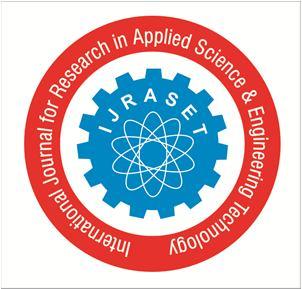
2 minute read
Quality Improvement of Oil and Fuel Leakage in Diesel Engine by using Semi Automatic Setup
from Quality Improvement of Oil and Fuel Leakage in Diesel Engine by using Semi Automatic Setup
by IJRASET
Swapnil D Kurhekar1, Abhijeet B Tamse2
1,
Advertisement
2Assistant Professor, Mechanical Engineering Department at Sanmati Engineering College Washim

Abstract: As we know when engine goes to testing department before that we test it through semi-automatic setup which is installed on assembly line converyor to test the oil and fuel leakage of diesel engine.Now different trial were taken on engine by using methodology which includes ATEQ D520 unit and air pressure regulator for detecting the leakage quantity.Actually ATEQ D520 UNIT is a flowmeter which measure a drop in pressure with a differential sensor.Here we supplied pressurized air into the engine through breather plug and overflow pipe.If leakage not found engine will dispatched to testing department and if leakage is found the problem may solve by spraying soap water in leakage area so that in that area bubbles comes out .This work which emphasis on the analysis of problem due to which engine reject from testing department and also time and cost saving analysis for one month.Due to this setup improvement in PQCDSM,PPM and reduction in cost poor quality supplied to customers from 28% to 18% of cost per benefit,better customer satisfaction.
Keywords: ATEQ D520 Sensor, Leakage Detection, Leakage Location, Oil and Fuel connection, PQCDSM, PPM.
I. INTRODUCTION
Leak detection is the process of finding leakages from oil/gas pipelines or from engines may create environmental hazards. Very small leakages may create a big problem. So, the System where leak may occur should possess following terms-Sensitivity-The system should detect minor leaks within a short period. Precision –The system should be able to locate leakages precisely. Robustness –The leak detection system should have active monitoring in unsteady or non- ideal conditions. Reliability –The system should not generate false alarms, even it is highly sensitive.
The aim of this experimental setup study is 100% leak detection in the system. Leakage may from Oil/gas pipelines, engine oil or fuel leakage to avoid explosions and environmental hazards and safety leak proof system is most important.
To compensate false alarms when there is no leak in the pipeline, to reduce the response time and Increase the accuracy of leakage location. The idea of Semi-Automatic setup used in such a way that the leakage in the engine is tested on assembly line conveyor before engine goes for testing in testing department. Due to this work, Productivity, Quality, Delivery, Safety and Moral of operator is increased. Reduced overall cost of engine considering rejection cost, Labor, transportation, Diesel, oil, Rework cost.
Many researchers work on this area of leakage testing and they found the computational methodology which permits to detect and locate leakage is based on the on-line analysis of signals originated from pressure, flow and temperature acquired by SCADA. Zhao yang, Mingliang Liu, Min ShaoIngjie Ji Computational method is used which permits todetect and locate leakage based on the online analysis ofsignals Acquired by SCADA. It is approximate method for leak detection (1).
Jasper Agbakwuru examines the advances in pipeline third party encroachment alert systems and leak control methods inoil/gas industry. Also highlights extent of spill/pollution issuein Niger Delta region due to intended /unintended damages &suggest possible method of control (2).
Agbakwuru Jasper Paper suggests that use of optical eye (3D camera) as main tool for managing the challenges in underwater pipeline repairs in unclear water conditions (3).
Agbakwuru Ahamefula, Jasper, Gudmestad Tobias Ove, Bilstad Torleiv invented the leak response with time when upstream & downstream valves are operated is taken internal diameter of pipeline considered holding and flowing characteristics are find out. This characteristic has been discussed with oil industryoperations (4).
Ali Nasirian result has shown that novel method is used which is step by step elimination method which hascapability of detecting leakage In terms of its location and quantity (5).
II. PROBLEM STATEMENT
Traditionally, Engine leakage testing was conducted by using pressure gauge, applying compressed air on the engine, chalk powder and use of ultraviolent lamp. So from this testing leakage may occur and it was not possible to get 100% leak detection.




